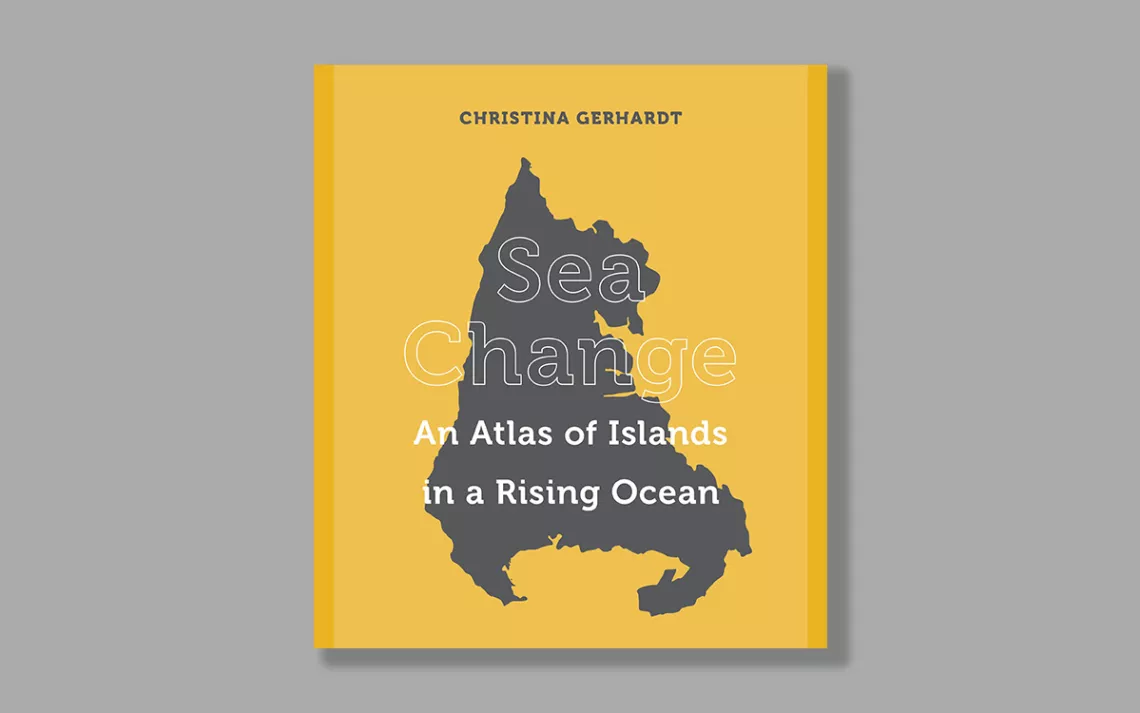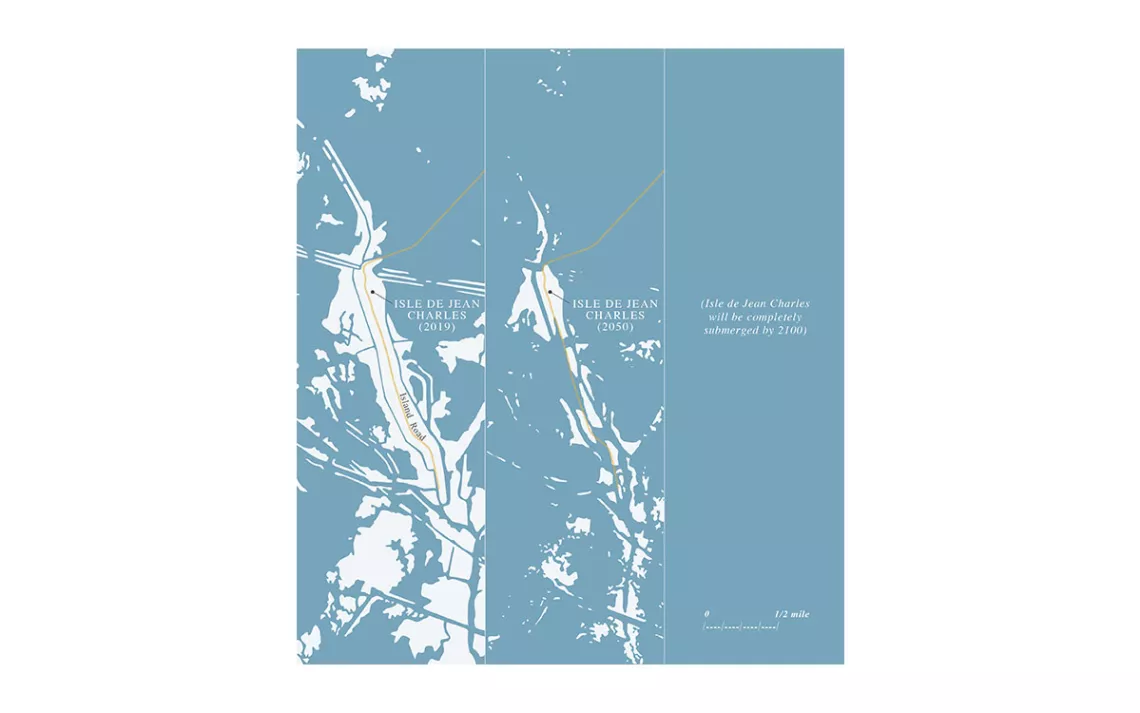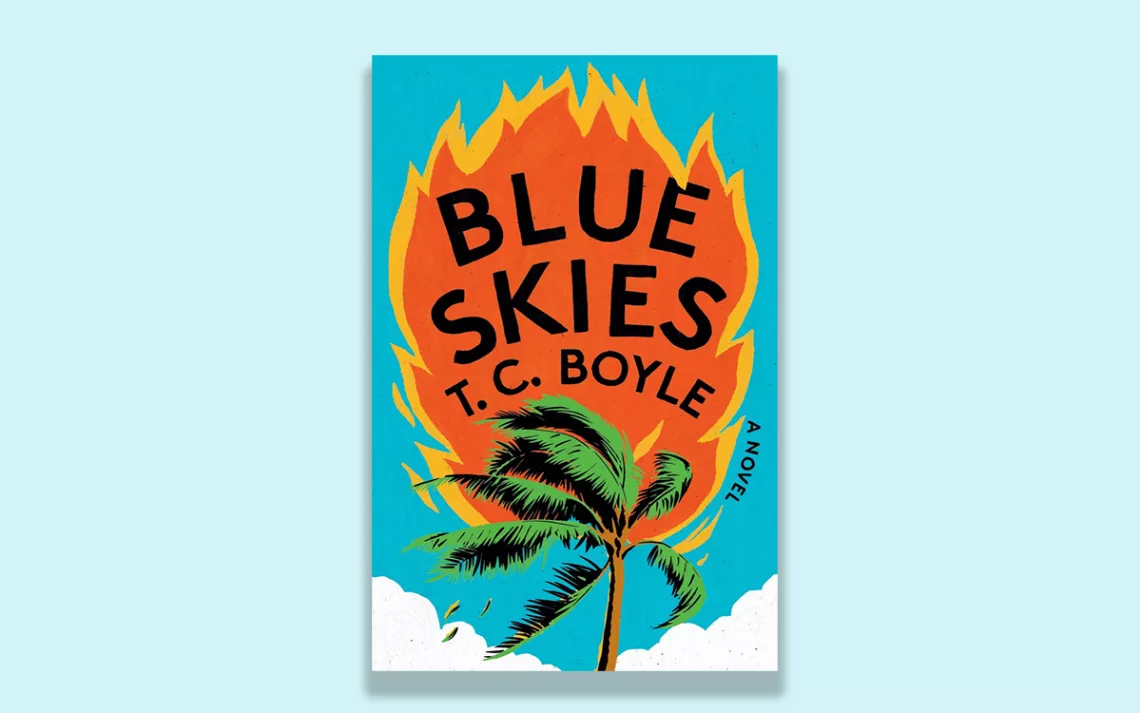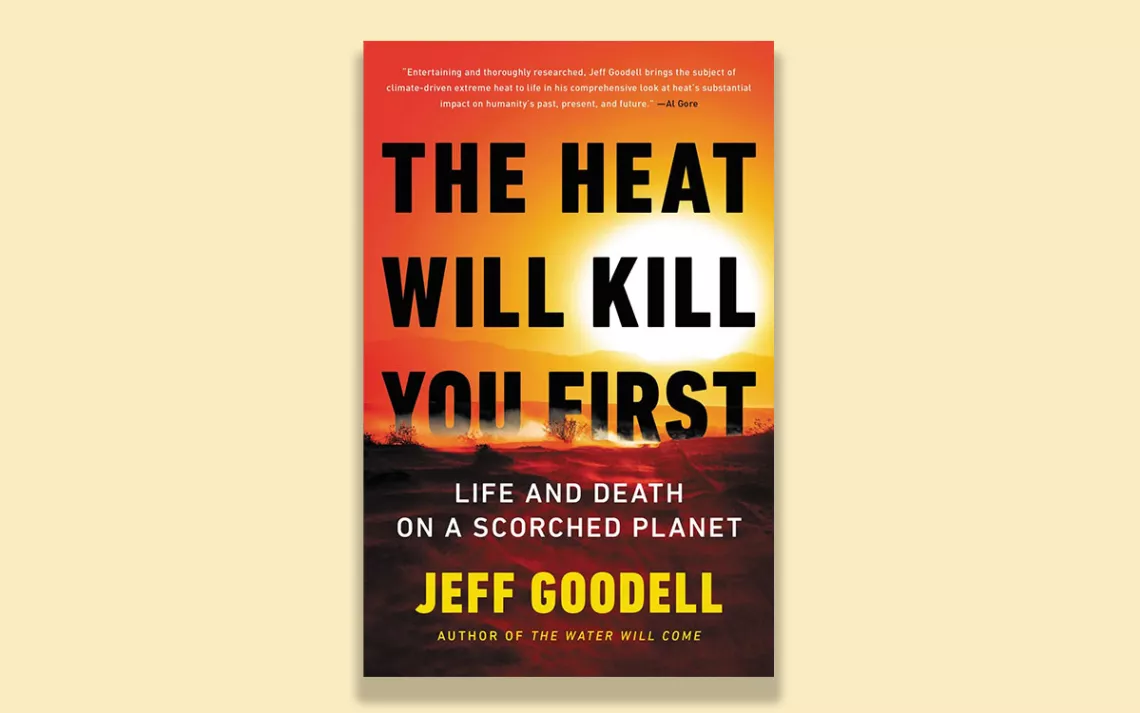3 Must-Read Books for Your Climate-Heating Summer Reading List
These stories illuminate the realities and the stakes of life in a warming world

Photo by Eskemar/iStock
It's been a summer of climate extremes and more are surely on the way: epic heat waves, unprecedented flooding, rising levels of carbon and other greenhouse gases. While the time horizon of climate change may seem distant to some—we often hear of an "extreme scenario" of climate crisis arriving in decades, for example, as opposed to years—the signals of a planet in peril are already here and all around us. What are we going to do about it?
In these three books—two nonfiction and one fiction—the authors grapple with this question and its new reality through powerful storytelling, vanguard research, and visual design. Taken together, one main character emerges in them all: a planet teetering on the edge, calling on us to act before it's too late.

Sea Change: An Atlas of Islands in a Rising Ocean
By Christina Gerhardt
University of California Press, 2023
You don’t need a PhD to know that Earth’s island nations will be impacted first and worst by global warming. Higher global temperatures are melting the massive icepacks in Greenland and Antarctica, which is causing sea levels to rise, which in turn poses a dire threat to the globe’s islands. It’s one thing, however, to consider these facts from the relative comfort of a continent; even those who live in low-lying coastal cities will have higher ground to retreat to. It’s something entirely different to experience this existential danger from somewhere in the middle of the ocean; if your home is already surrounded by water and the water is rising, there’s no place to go.
In her impassioned and encyclopedic book Sea Change: An Atlas of Islands in a Rising Ocean, Christina Gerhardt, an associate professor at the University of Hawai'i at Mānoa who has also written environmental journalism for Sierra and other outlets, encourages readers to consider the vantage point of islanders in the era of climate change. Those of us who live on the continents often think of islands as remote. But any place can be the center of the world. “There is a gulf of difference between viewing ‘islands in a far sea’ and as a ‘sea of islands,’” Gerhardt quotes the late Fijian writer Epeli Hau’Ofa. This book is intended to bridge that gulf and to put the plight of islanders at the front and center of the climate story.
As you’d guess from the subtitle, the book accomplishes this recentering mostly through maps. Gerhardt and cartographer Molly Roy zoom in on some 50 islands to illustrate, with frightening precision, what they look like today and then what they are predicted to look like in 2050 and/or 2100. The shrinking coastlines reveal that a place doesn’t have to be totally underwater to be uninhabitable.

Cartographer Molly Roy. Originally printed in Sea Change: An Atlas of Islands in a Rising Ocean by Christina Gerhardt, published by the University of California Press. © 2023
Take, as just one example, the Republic of the Seychelles in the Indian Ocean. There will still be some kind of island there come 2100. But the Seychelles major settlements, primary roads, desalination plants, and airport will have been inundated. On many islands, king tides and saltwater intrusion into aquifers will make human life unbearable long before the last palm tree disappears beneath the waves. And these cartographic projections are, as Gerhardt notes, “on the conservative end of possible predictions, so the reality of sea level rise could in fact be more grave than that what is shown on these maps.” Disaster will come well in advance of the worst-case scenarios.
The maps, though, are only part of the picture. “What I have missed most in atlases of islands are the voices of the islanders,” Gerhardt writes. She aspires, she says, to a “multimedia and polyvocal approach.” The cartography is accompanied by capsule timelines of the islands’ histories, short travelogues by Gerhardt, scientific illustrations, interviews with island residents, and poetry from island writers. Much of the verse is what you might call “resistance poetry.” There’s lyricism, sure, but the poetry is explicitly political, the lines lit up by righteous anger at centuries of colonialism and the patent injustice of climate change—the fact that island nations have done so little to cause the climate crisis yet are experiencing its consequences so harshly. “I lost my talk / The talk you took away,” Rita Joe of the Mi’kmaq First Nation writes, referring to being sent to an Indigenous-Canadian boarding school. Her poem ends, “Let me find my talk / So I can teach you about me.”
With its many footnotes and detailed glossary, Sea Change is designed for the classroom—but it could work just as well for the coffee table. The micro-chapters with their maps and timelines make this the kind of book that is easy to dip in and out of and experience in no particular order. You can island-hop just by flipping the page, and on every page you’ll encounter some scientific curiosity or historical factoid.
Sea Change is a map of the future, which makes it, inevitably, an atlas of disappearing places. As islands disappear, ancient histories, cultures, and languages might very well vanish with them. This volume, then, is an invaluable bit of record-keeping, a way of holding onto a certain vantage point even as the original view slips under the waves. — Jason Mark

Blue Skies
By T.C. Boyle
Liveright, 2023
The wedding already had the makings of a disaster long before extreme weather ruined it for everybody. Todd, the groom, a Bacardi ambassador with a Tesla, was smoking dope in his dressing room with Cooper, his new brother-in-law. Cooper, a climate-dooming entomologist whose right arm had to be amputated because of a tick bite, was drinking and sulking while trying to tune out Todd’s nails-on-chalkboard “bro-in-law” talk. During the ceremony, Cooper listened like a zombie as the minister married Todd to his sister Cat, who had recently moved to Florida and purchased a Burmese python to up her career as a social media influencer. Everyone was drunk and sweating in withering heat. Then the wind came out of nowhere, knocking over plates and name cards and hair-dos, driving the guests inside. The power was still on, but then suddenly it wasn’t. The caterer announced there would be no dinner, and Cat, plastered by then, started freaking out. Ottilie, Cat’s mother, who had recently taken to eating insects to do her part to save the planet (“cricket cobbler” and “critter fritters” were a particular enthusiasm) worked to pacify her while Peter, Cat’s father, a doctor with an ill-fitting tux and a beard dripping with sweat, dutifully delivered weather reports (“It’s supposed to keep up till this time tomorrow—and the worst is yet to come…”) That’s when the whole building filled with smoke and a wildfire on the ridge behind them lit up the night sky, and everybody ran for their lives.
In some ways, the family at the heart of T.C. Boyle’s wickedly absurd climate dystopia novel Blue Skies could be like any other, living at just about any other time in American history. A retired mother with too much time on her hands is spending too much of it handwringing over her kids; her husband is waiting in the wings with clinical advice or sedatives to blunt her emotions “as if she could lock them away in some pharmaceutical drawer and pretend life was all blue skies and sunshine”; a happy-go-lucky son who was bullied as a kid for being a “Bug Boy” loses an arm, and with it, his patience for pointlessness; a daughter and all the rest of these characters have a penchant for attention and booze and buying stuff in a world where everybody is always, well, taking selfies and sedating themselves and buying stuff.
But their story is cast against the background of global warming, and that intersection—between the superfluities of modern American life and the apocalyptic realities of societal and ecological collapse—gets at the heart of what Boyle is after here. At just about every turn, he sticks the question in your face: How will we Americans, with all our consumerism and supercilious concerns and melodramas, handle a planet teetering over the abyss? If the misadventures of these characters are any indication, we aren’t going to handle it very well.
The story unfolds like a lot of stories do, in the quotidian concerns of day-to-day life: draining work life; snoring partners; when to drink, what to drink, and how much is too much (or not yet enough); what to buy next; what to watch on TV. Meanwhile, the air is thicker and hotter than ever, the seas are rising, the beaches are vanishing. Boyle wastes no opportunity to get us laughing even as we can't help but sympathize with these well-meaning but tragically lost characters caught in a warming world. Cat seems genuinely out to just give her new home with Todd in Florida a go, though her obsession with snakes is bound to get her into trouble. Science for Cooper is really just a playground adventure, and he's pretty chill with his climate prognostications all things considered, though his patience is bound to run thin.
All around them, the world is going haywire. One day insects everywhere are suddenly dead all over the place, and the media, always just looking for the next dopamine hit, treats it like a monster movie (“Bug Apocalypse!”). The next day alligators appear around the corner because water from sea level rise is flooding the streets. The only thing anyone can seem to do about it is keep on doing nothing about it. Even climate-conscious Cooper finally gives up on his field research to join everybody else in their more prosaic interests ("His eyes were drawn to the hammock. A mental picture of cold beer and a bag of Doritos came to him.") Boyle has a message with this dark comedy, and it’s an unforgiving one: The world is falling apart right before our eyes, and no one seems to be doing much about it because the only thing that seems to be right before our eyes all the time is, well, ourselves.
For most of these characters—and for many of us, Boyle is no doubt suggesting—the climate crisis has become one of two things: either something to be addressed with worthy but nonetheless useless personal goalsetting like recycling more or flying less, or just a show to be watched passively like any other spectacle or spooky kind of entertainment, “offstage, so distant at that point as to be the stuff of sci-fi, drones, mother ships, hyperspace, catastrophically bad weather.” Meanwhile, time is running out. As things get worse, at some point these characters—and we along with them—will have to give up the tranquilizers that help us feel like it will all be blue skies and sunshine and actually start doing something about the possibility that one day, it won't. —Jonathan Hahn

The Heat Will Kill You First: Life and Death on a Scorched Planet
by Jeff Goodell
Little, Brown and Company , 2023
What do rising sea levels, record-breaking floods, and a year-round wildfire season all have in common—aside from being part of anthropogenic climate change? As veteran environmental journalist and author Jeff Goodell underscores in his deeply reported and absolutely terrifying new book, they’re all caused by the single phenomenon of heat.
While the premise seems self-evident, that’s precisely what makes The Heat Will Kill You First essential reading. The connection is so obvious, it’s easy to overlook the highly complex nature of heat and its manifold effects on life. Goodell’s book fills an immense void in our understanding of climate change. We follow him across the globe as he talks with scientists, environmental activists, and ordinary people whose livelihoods, and very lives, have been upended by rising temperatures.
In a chapter on urban heat islands, Goodell explores how traditionally designed cities become lethal during heat waves. One particularly harrowing section is set in Paris where the 19th-century zinc rooftops give the City of Light a significant share of its visual charm. But those beautiful rooftops took a terrible toll in a 2003 heat wave that killed 15,000 people across France. “On hot days, they heat up like frying pans—literally,” Goodell writes. One researcher measured a temperature of 194° on a zinc roof in Paris on a summer day. And because top‑floor garrets were designed for servants and not insulated, that heat is transferred directly into the rooms below. The result, he reports, turned romantic garrets into “deathtraps.” Many of the Parisians who perished in 2003 were “literally cooked … as if they were in an oven.”
Racing through Goodell’s book (the riveting narrative makes it impossible to merely browse), I was struck by how it frequently reads like a detective story. The author investigates deadly heat waves in the Pacific Northwest, India, China, and elsewhere, almost as if they’re crime scenes. And perhaps they are. After all, while wealthy nations including the United States and most of Western Europe account for just 12 percent of the global population, we’re responsible for emitting half of all greenhouse gases from burning fossil fuels. Meanwhile, residents of poorer countries are affected first, and worst, by extreme weather events. “It’s how the climate crisis works,” Goodell observes. “The rich pollute, the rest suffer.”
Goodell highlights another violation: Even in wealthy nations, social and economic inequalities often determine who lives and who dies in climate disasters. He describes how towering old oak and pecan trees shade his own neighborhood in Austin, Texas. “If I ride my bike out to the east-side neighborhoods,” he writes, “where many Black residents were pushed by racial zoning laws (a.k.a. redlining) in the 20th century, the trees are smaller, the sun is hotter, the temperature higher.” Like many cities, Austin has begun planting trees in underserved neighborhoods. But, Goodell wryly notes, “it’s going to take a long time to democratize shade.”
Thankfully, there’s more to Goodell’s book than carnage and injustice, including a fascinating exploration of how different animals have evolved to cope with heat. I hadn’t known that kangaroos spit on their arms to cool off as temperatures rise or that the dark spots on giraffes direct warm blood toward the lighter areas where excess heat is released. There are many more such examples, from camels to bees, birds, and ants.
Goodell concludes with a message of hope, albeit a justifiably measured one. “When people ask me if it’s hard to write about the climate crisis and imagine the hardship and suffering to come, my answer is always the same: This is the great story of our time, one that I feel privileged to tell. And yes, it gets dark sometimes. But it is also endlessly inspiring because I meet so many people who are fighting for the future and reimagining everything about how we live on this planet.”
The Heat Will Kill You First comes at a critical junction in human history, when climate-induced disasters have become nearly daily events, making it hard for even the mainstream media to ignore. But is this a moment or a movement? Perhaps Goodell’s brilliant and sobering book can help inspire a critical mass of people to “reimagine everything” and join the fight to create a habitable future. —Osha Gray Davidson
 The Magazine of The Sierra Club
The Magazine of The Sierra Club



